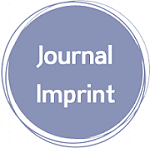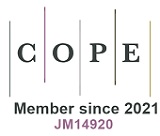Blood Cell Indices and Morphological Abnormalities Detected Among COVID-19 Patients Receiving Care
Downloads
Doi:10.28991/SciMedJ-2023-05-01-02
Full Text:PDF
Downloads
WHO. (2023). WHO Health Emergency Dashboard. World Health Organization, Geneva, Switzerland. Available online: https://covid19.who.int/region/afro/country/gh (accessed on February 2023).
Sun, J., He, W. T., Wang, L., Lai, A., Ji, X., Zhai, X., Li, G., Suchard, M. A., Tian, J., Zhou, J., Veit, M., & Su, S. (2020). COVID-19: Epidemiology, Evolution, and Cross-Disciplinary Perspectives. Trends in Molecular Medicine, 26(5), 483–495. doi:10.1016/j.molmed.2020.02.008.
Fan, B. E., Chong, V. C. L., Chan, S. S. W., Lim, G. H., Lim, K. G. E., Tan, G. B., Mucheli, S. S., Kuperan, P., & Ong, K. H. (2020). Hematologic parameters in patients with COVID-19 infection. American Journal of Hematology, 95(6). doi:10.1002/ajh.25774.
Konlaan, Y., Asamoah Sakyi, S., Kumi Asare, K., Amoah Barnie, P., Opoku, S., Nakotey, G. K., Victor Nuvor, S., & Amoani, B. (2022). Evaluating immunohaematological profile among COVID-19 active infection and recovered patients in Ghana. PLOS ONE, 17(9), e0273969. doi:10.1371/journal.pone.0273969.
Araya, S., Wordofa, M., Mamo, M. A., Tsegay, Y. G., Hordofa, A., Negesso, A. E., Fasil, T., Berhanu, B., Begashaw, H., Atlaw, A., Niguse, T., Cheru, M., & Tamir, Z. (2021). The magnitude of hematological abnormalities among covid-19 patients in Addis Ababa, Ethiopia. Journal of Multidisciplinary Healthcare, 14, 545–554. doi:10.2147/JMDH.S295432.
Li, T., Lu, H., & Zhang, W. (2020). Clinical observation and management of COVID-19 patients. Emerging Microbes & Infections, 9(1), 687–690. doi:10.1080/22221751.2020.1741327.
Huang, W., Berube, J., McNamara, M., Saksena, S., Hartman, M., Arshad, T., Bornheimer, S. J., & O’Gorman, M. (2020). Lymphocyte Subset Counts in COVID-19 Patients: A Meta-Analysis. Cytometry Part A, 97(8), 772–776. doi:10.1002/cyto.a.24172.
Palladino, M. (2021). Complete blood count alterations in covid-19 patients: A narrative review. Biochemia Medica, 31(3), 030501. doi:10.11613/BM.2021.030501.
Djakpo, D. K., Wang, Z., Zhang, R., Chen, X., Chen, P., & Ketisha Antoine, M. M. L. (2020). Blood routine test in mild and common 2019 coronavirus (COVID-19) patients. Bioscience Reports, 40(8), BSR20200817. doi:10.1042/BSR20200817.
Elderdery, A. Y., Elkhalifa, A. M. E., Alsrhani, A., Zawbaee, K. I., Alsurayea, S. M., Escandarani, F. K., Alhamidi, A. H., Idris, H. M. E., Abbas, A. M., Shalabi, M. G., & Mills, J. (2022). Complete Blood Count Alterations of COVID-19 Patients in Riyadh, Kingdom of Saudi Arabia. Journal of Nanomaterials, 2022, 1–6. doi:10.1155/2022/6529641.
Kazancioglu, S., Bastug, A., Ozbay, B. O., Kemirtlek, N., & Bodur, H. (2020). The Role of Hematological Parameters in Patients with Coronavirus Disease 2019 and Influenza Virus Infection. Epidemiology and Infection, 148. doi:10.1017/S095026882000271X.
Pozdnyakova, O., Connell, N. T., Battinelli, E. M., Connors, J. M., Fell, G., & Kim, A. S. (2021). Clinical Significance of CBC and WBC Morphology in the Diagnosis and Clinical Course of COVID-19 Infection. American Journal of Clinical Pathology, 155(3), 364–375. doi:10.1093/ajcp/aqaa231.
Boakye-Yiadom, A. P., Nguah, S. B., Ameyaw, E., Enimil, A., Wobil, P. N. L., & Plange-Rhule, G. (2021). Timing of initiation of breastfeeding and its determinants at a tertiary hospital in Ghana: a cross-sectional study. BMC Pregnancy and Childbirth, 21(1), 1-9. doi:10.1186/s12884-021-03943-x.
Ghana Statistical Service. (2021). Ghana 2021 Population and Housing Census. Population of Regions and Districts, Ghana Statistical Service, General Report Volume 3A. Accra, Ghana. Available online: https://statsghana.gov.gh/gssmain/fileUpload/ pressrelease/2021%20PHC%20General%20Report%20Vol%203A_Population%20of%20Regions%20and%20Districts_181121.pdf (accessed on February 2023).
Lukman, A. F., Rauf, R. I., Abiodun, O., Oludoun, O., Ayinde, K., & Ogundokun, R. O. (2020). COVID-19 prevalence estimation: Four most affected African countries. Infectious Disease Modelling, 5, 827–838. doi:10.1016/j.idm.2020.10.002.
Bullard, J., Dust, K., Funk, D., Strong, J. E., Alexander, D., Garnett, L., Boodman, C., Bello, A., Hedley, A., Schiffman, Z., Doan, K., Bastien, N., Li, Y., Van Caeseele, P. G., & Poliquin, G. (2020). Predicting Infectious Severe Acute Respiratory Syndrome Coronavirus 2 from Diagnostic Samples. Clinical Infectious Diseases, 71(10), 2663–2666. doi:10.1093/cid/ciaa638.
Huang, J. T., Ran, R. X., Lv, Z. H., Feng, L. N., Ran, C. Y., Tong, Y. Q., Li, D., Su, H. W., Zhu, C. L., Qiu, S. L., Yang, J., Xiao, M. Y., Liu, M. J., Yang, Y. T., Liu, S. M., & Li, Y. (2020). Chronological Changes of Viral Shedding in Adult Inpatients with COVID-19 in Wuhan, China. Clinical Infectious Diseases, 71(16), 2158–2166. doi:10.1093/cid/ciaa631.
Liu, Y., Liao, W., Wan, L., Xiang, T., & Zhang, W. (2021). Correlation between Relative Nasopharyngeal Virus RNA Load and Lymphocyte Count Disease Severity in Patients with COVID-19. Viral Immunology, 34(5), 330–335. doi:10.1089/vim.2020.0062.
Liu, Y., Yan, L. M., Wan, L., Xiang, T. X., Le, A., Liu, J. M., Peiris, M., Poon, L. L. M., & Zhang, W. (2020). Viral dynamics in mild and severe cases of COVID-19. The Lancet Infectious Diseases, 20(6), 656–657. doi:10.1016/S1473-3099(20)30232-2.
Liu, Y., Yang, Y., Zhang, C., Huang, F., Wang, F., Yuan, J., Wang, Z., Li, J., Li, J., Feng, C., Zhang, Z., Wang, L., Peng, L., Chen, L., Qin, Y., Zhao, D., Tan, S., Yin, L., Xu, J., … Liu, L. (2020). Clinical and biochemical indexes from 2019-nCoV infected patients linked to viral loads and lung injury. Science China Life Sciences, 63(3), 364–374. doi:10.1007/s11427-020-1643-8.
Ma, K.-L., Liu, Z.-H., Cao, C.-F., Liu, M.-K., Liao, J., Zou, J.-B., Kong, L.-X., Wan, K.-Q., Zhang, J., Wang, Q.-B., Tian, W.-G., Qin, G.-M., Zhang, L., Luan, F.-J., Li, S.-L., Hu, L.-B., Li, Q.-L., & Wang, H.-Q. (2020). COVID-19 Myocarditis and Severity Factors: An Adult Cohort Study, Medrxiv, 1-60. doi:10.1101/2020.03.19.20034124.
Bellmann-Weiler, R., Lanser, L., Barket, R., Rangger, L., Schapfl, A., Schaber, M., Fritsche, G., Wöll, E., & Weiss, G. (2020). Prevalence and Predictive Value of Anemia and Dysregulated Iron Homeostasis in Patients with COVID-19 Infection. Journal of Clinical Medicine, 9(8), 2429. doi:10.3390/jcm9082429.
Wang, J., Li, Q., Yin, Y., Zhang, Y., Cao, Y., Lin, X., Huang, L., Hoffmann, D., Lu, M., & Qiu, Y. (2020). Excessive Neutrophils and Neutrophil Extracellular Traps in COVID-19. Frontiers in Immunology, 11. doi:10.3389/fimmu.2020.02063.
Lippi, G., & Plebani, M. (2020). The critical role of laboratory medicine during coronavirus disease 2019 (COVID-19) and other viral outbreaks. Clinical Chemistry and Laboratory Medicine (CCLM), 58(7), 1063–1069. doi:10.1515/cclm-2020-0240.
Singh, A., Verma, S. P., Kushwaha, R., Ali, W., Reddy, H. D., & Singh, U. S. (2022). Hematological Changes in the Second Wave of SARS-CoV-2 in North India. Cureus, 14(3), 23495. doi:10.7759/cureus.23495.
Ghosh, B., Sarkar, S., Sepay, N., Das, K., Das, S., & Dastidar, S. G. (2021). Factors for COVID-19 infection that govern the severity of illness. SciMedicine Journal, 3(2), 177-197. doi:10.28991/SciMedJ-2021-0302-9.
Qu, R., Ling, Y., Zhang, Y., Wei, L., Chen, X., Li, X., Liu, X., Liu, H., Guo, Z., Ren, H., & Wang, Q. (2020). Platelet-to-lymphocyte ratio is associated with prognosis in patients with coronavirus disease‐19. Journal of Medical Virology, 92(9), 1533-1541. doi:10.1002/jmv.25767.
Khakwani, M., Horgan, C., & Ewing, J. (2021). COVID-19-associated oxidative damage to red blood cells. British Journal of Haematology, 193(3), 481. doi:10.1111/bjh.17317.
Marchi, G., Bozzini, C., Bertolone, L., Dima, F., Busti, F., Castagna, A., Stranieri, C., Fratta Pasini, A. M., Friso, S., Lippi, G., Girelli, D., & Vianello, A. (2022). Red Blood Cell Morphologic Abnormalities in Patients Hospitalized for COVID-19. Frontiers in Physiology, 13. doi:10.3389/fphys.2022.932013.
Takemoto, C. M. (2023). Burr cells, acanthocytes, and target cells: Disorders of red blood cell membrane. UpToDate, Waltham, United States. Available online: https://www.uptodate.com/contents/burr-cells-acanthocytes-and-target-cells-disorders-of-red-blood-cell-membrane (accessed on February 2023).
- This work (including HTML and PDF Files) is licensed under a Creative Commons Attribution 4.0 International License.












